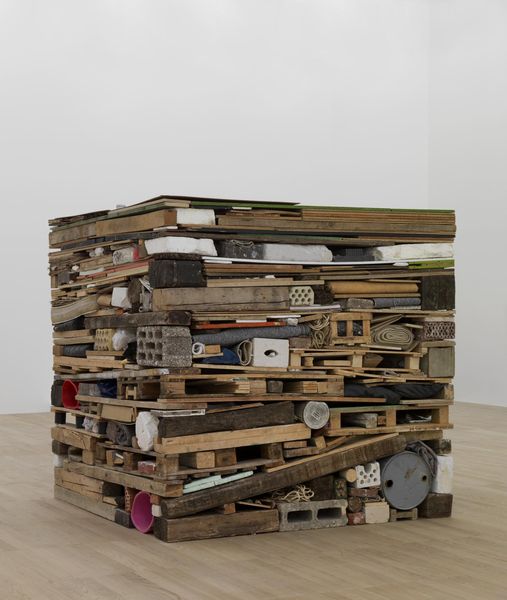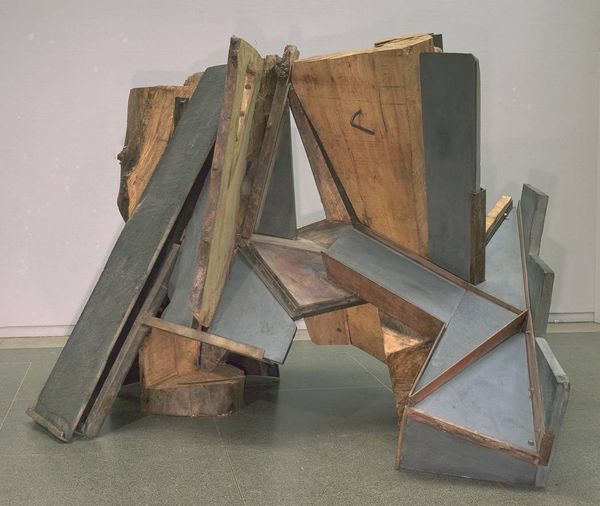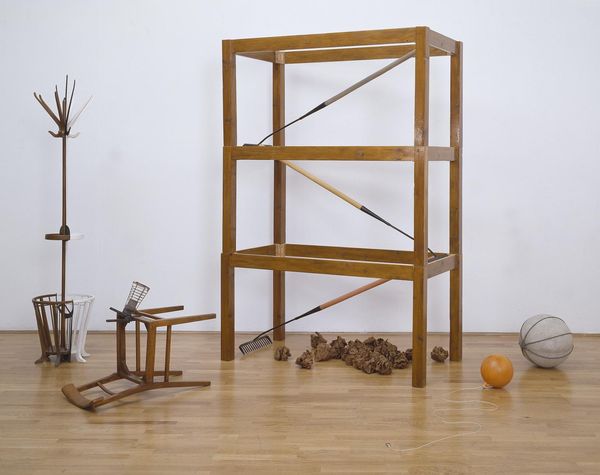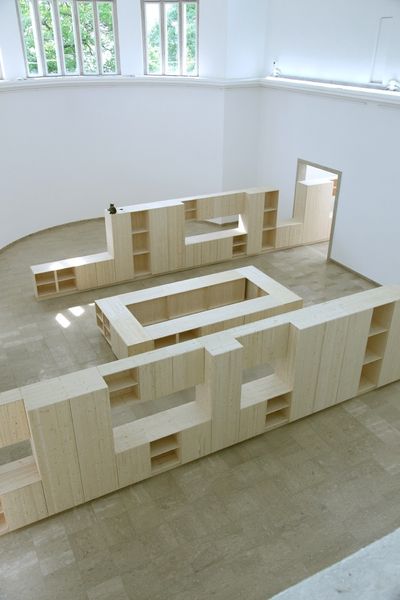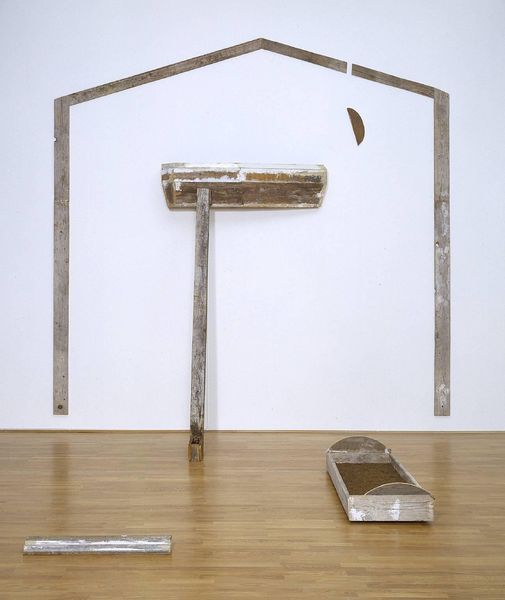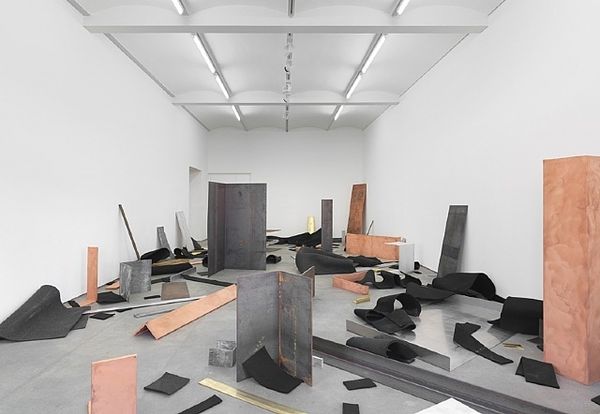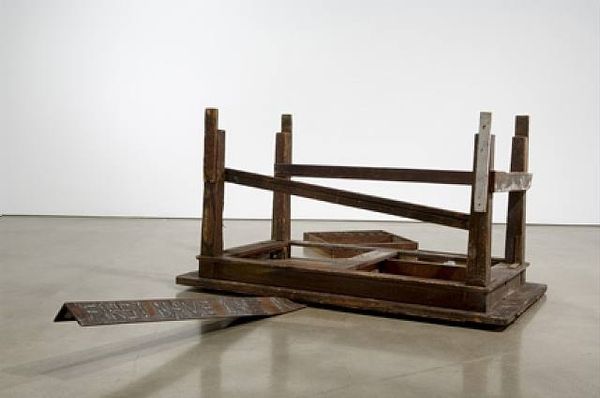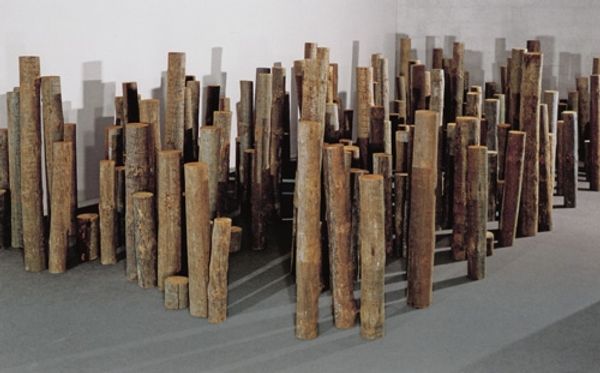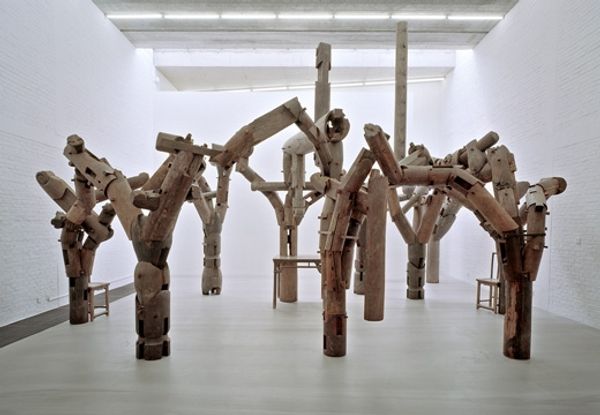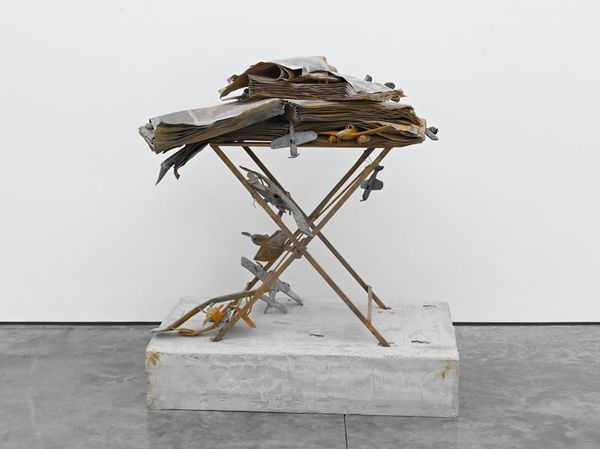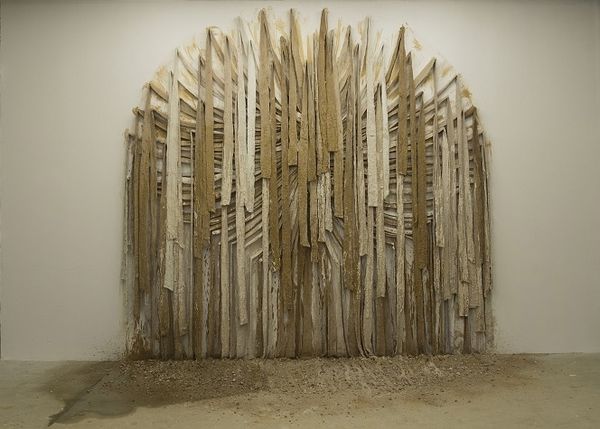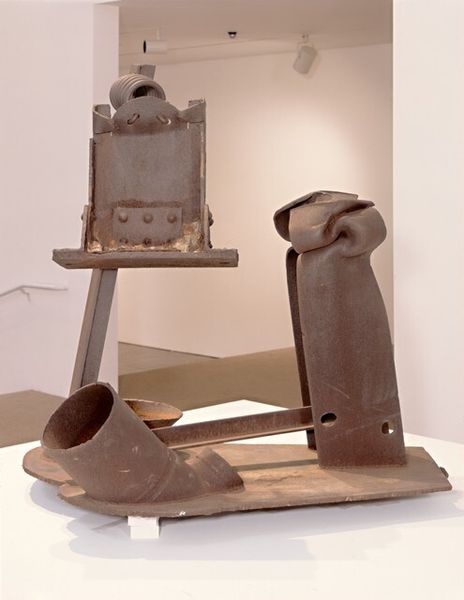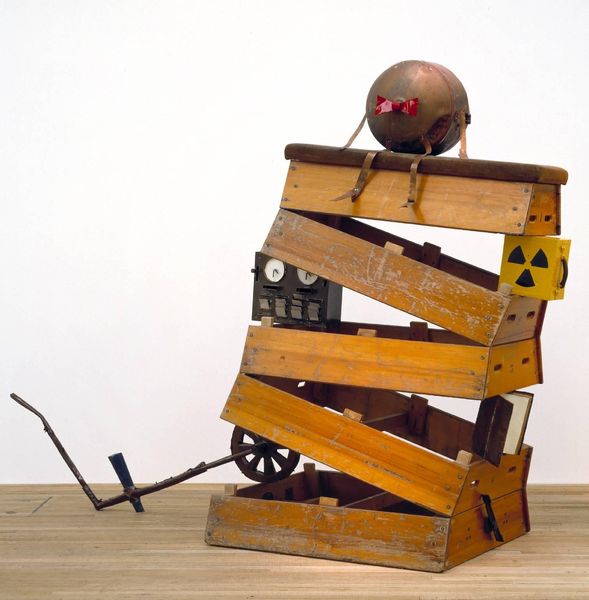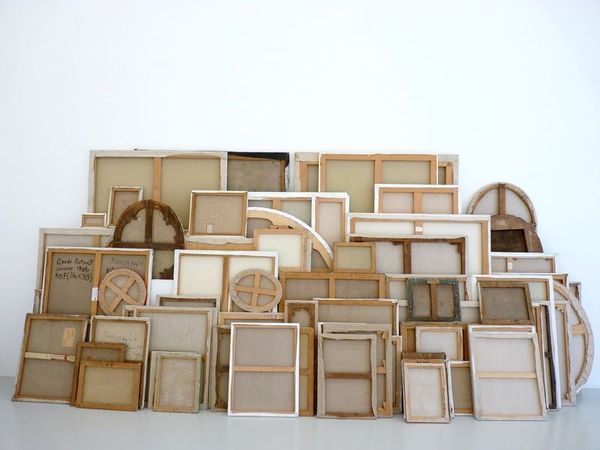
Dimensions: object: 1092 x 3931 x 4902 mm
Copyright: © DACS 2014 | CC-BY-NC-ND 4.0 DEED, Photo: Tate
Curator: Tony Cragg's "Axehead" is a sprawling collection of found wooden objects, arranged with the precision of an archeological dig. Editor: It feels almost like a disassembled workshop, doesn’t it? A deliberate undoing, or a pre-doing perhaps. Curator: Yes, there is a sense of potential, but also of deconstruction. The objects—boxes, tools, fragments—speak to craft, labor, and the history embedded within materials. Editor: Absolutely. The interplay of horizontality and the implicit geometry makes me think about the ready-made and post-structuralism. Curator: It's fascinating how Cragg transforms the mundane into something evocative, almost a meditation on our relationship with everyday objects. Editor: Indeed, it invites us to look closer, to reconsider the stories held within the simplest of things. Curator: Precisely, a quiet provocation to find beauty in the overlooked.
Comments
Join the conversation
Join millions of artists and users on Artera today and experience the ultimate creative platform.
tate 8 months ago
⋮
Axehead consists of forty-nine separate objects arranged on the floor so as to form the fan-like outline of the head of an axe. The miscellaneous objects are mostly made of wood and include such disparate items as a chair, shelving unit, toy scooter, railway sleeper, wooden spoon, water diviner and coat hanger. They are organized into the required configuration according to height, shape and size. The largest objects form a bulky section which gradually tapers towards the ground where the smaller pieces of wood form the narrow blade of the axehead. This work is typical of a group of works by Cragg that are comprised of a multiplicity of discrete components arranged in such a way that they resemble another object. These works include Tate’s Britain Seen from the North 1981 (Tate T03347) in which myriads of brightly coloured discarded objects are carefully placed on the wall to create an image of Britain rotated on its side alongside a lone figure. In Axehead and Britain Seen from the North Cragg strives to retain a balance between the fragments and the image formed from their distribution.
